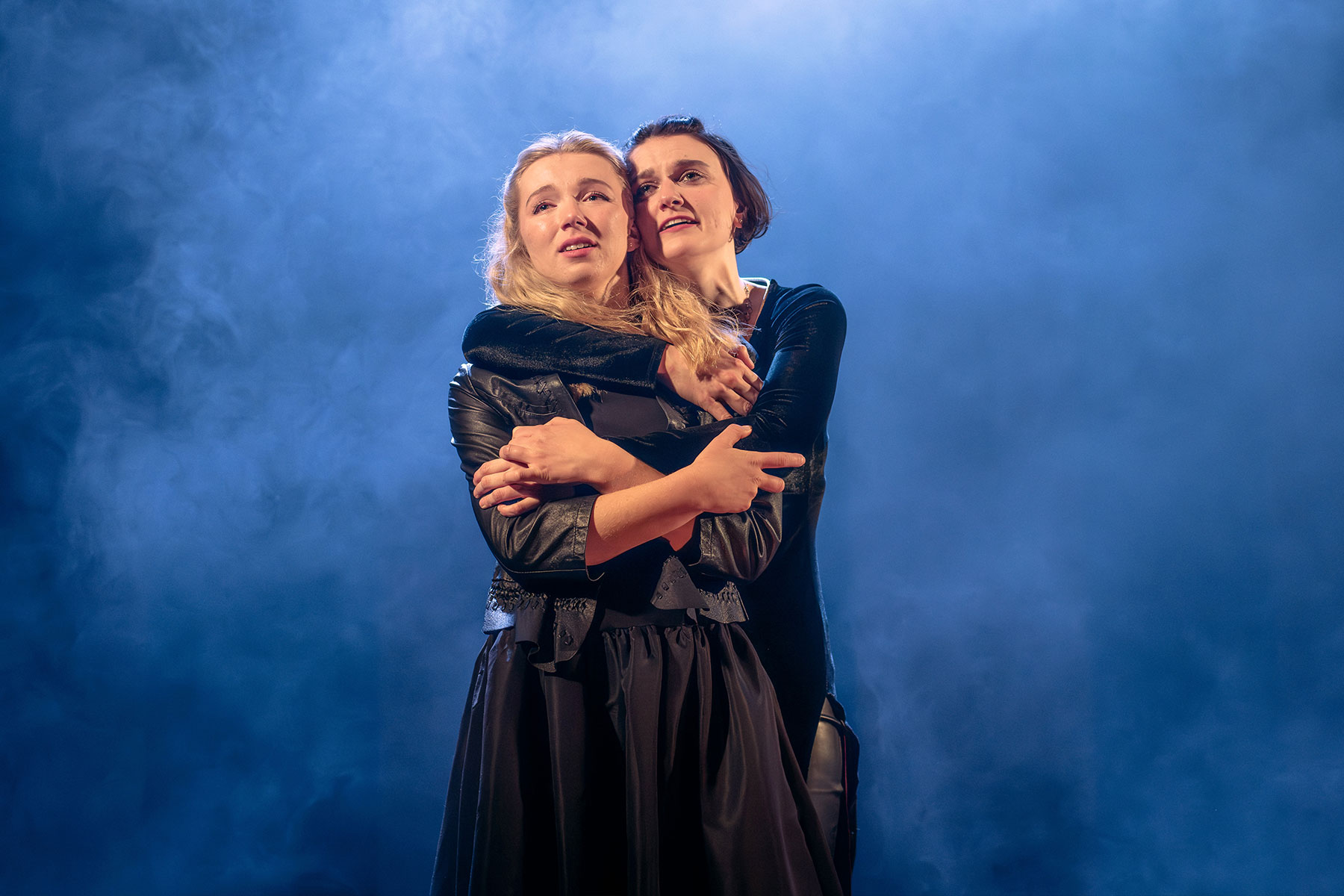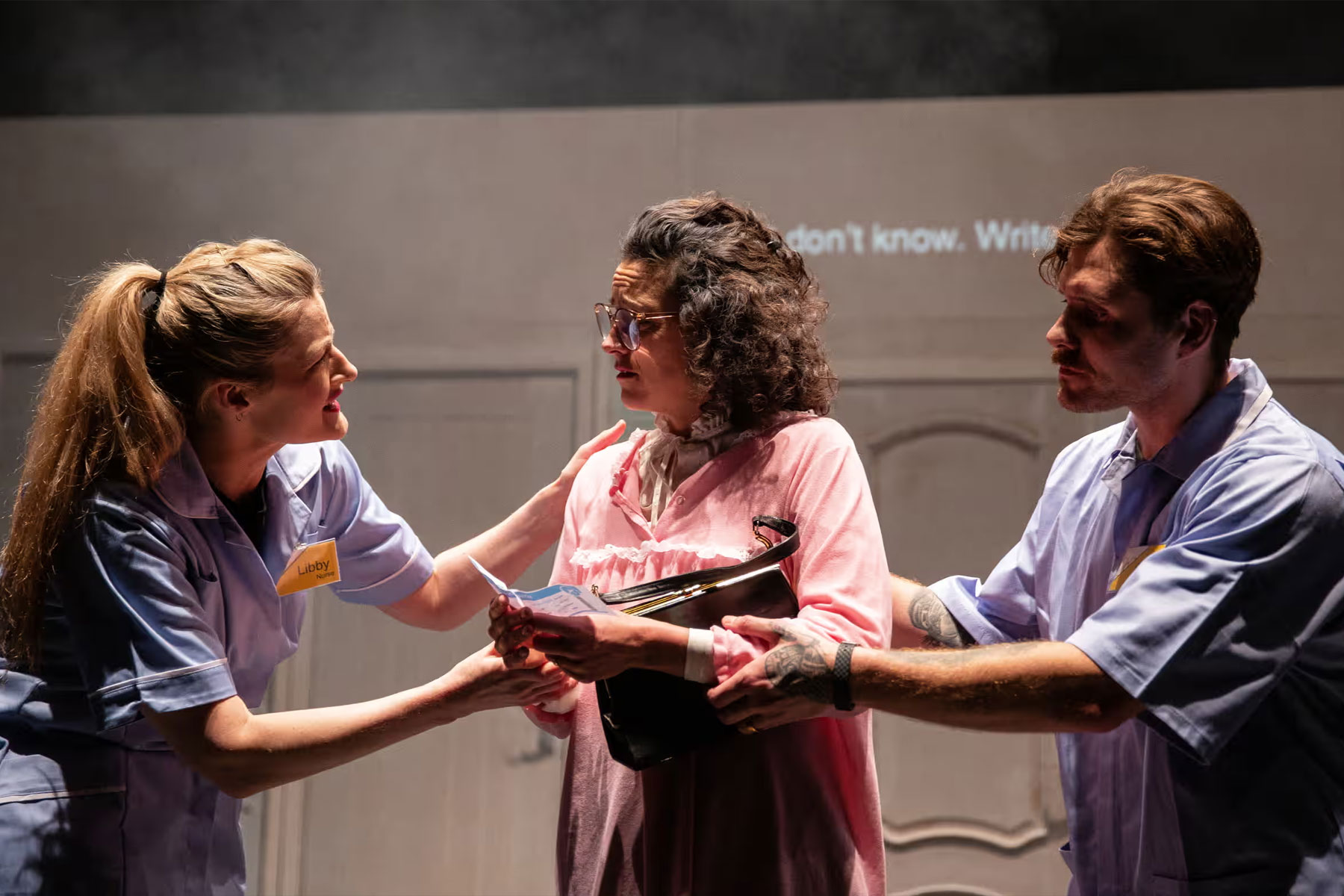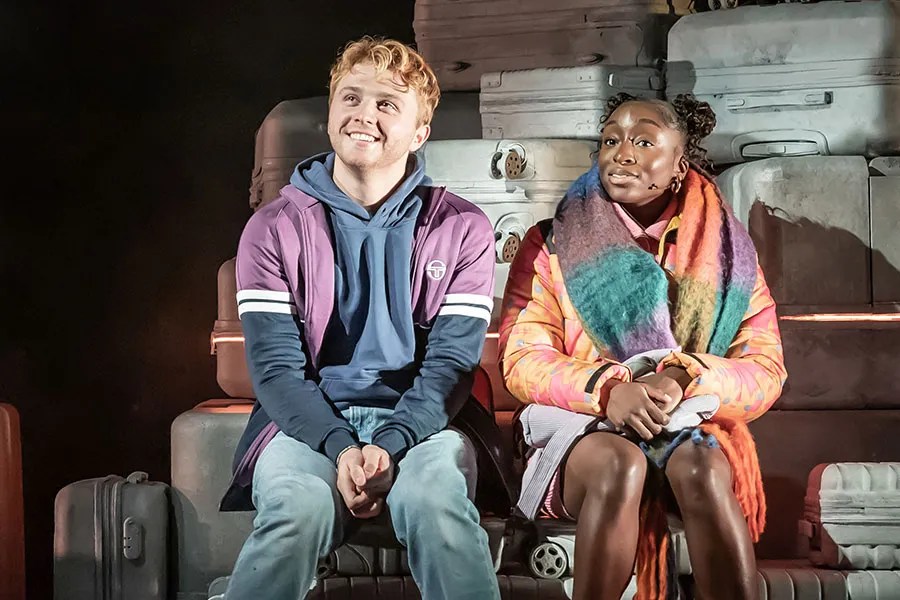Let's talk about sets: Anna Fleischle on Hangmen
Martin McDonagh‘s script for Hangmen is full bodied right from the first read. The settings he evokes and the characters within them are so clear and rounded that the world of the play literally appears in front of your eyes.
After I first read the script I immediately had a strong instinct – which was shared by director Matthew Dunster – that the prison cell of the first scene, even though only used for around five minutes, could not be a small or half setting but rather needed to feel so complete as if the whole play could be set within it. I wanted it to remain solid and complete and then unexpectedly rise into the air – revealing the pub of the following scenes – like an omen hanging over the rest of the play and it’s inhabitants. There is something about the seriousness and definity of the situation and the solidity of a prison with its heavy walls cutting the condemned man off from the world outside which he will never see again – supporting the underlying weight of the scene.
The hanging of a man in the first scene is so bold and even though the scene is lined with typical Martin McDonagh black humour, it never lets you forget the desperate and horrific reality of a deliberate and calculated killing. We took great care in recreating the setting and functionality of the hanging to make it as authentic as possible – the shock and horror of a man dropping through the floor with the loud noise of the trap doors crashing down with him.
Researching the pub was very exciting. I particularly liked the idea of the basic working men’s pubs and the sense of community they seem to have, a shared home for many a soul drifting together day after day. I love how they always seem to be organically grown spaces – the architecture is hardly ever purposefully designed – they seem to be the result of never ending adaptations, additions, strange angles and funny corners. Items being stored in odd places, often random things on the walls.
After the dramatic reveal of the pub I knew this language of change had to be carried on when going to the cafe. The cafe is also the place chosen by two characters as a meeting place in secret and away from the pub. So the idea of the cafe floating above the pub was born with its filmic quality of a close-up into another space with rain splashing down outside and the smell of burgers and chips lingering in the utilitarian and bare setting of a Formica walled cafe.
The great thing about designing for theatre is the freedom of being able to think about settings away from the purely naturalistic – often being forced to do so in the process of solving the problem of multiple locations. I love thinking about the full three-dimensionality of spaces, how they relate to each other, what their psychology is and what the journey taking you from one into the other may be. Hangmen needed very realistic spaces but through the journeys I chose to get from one to the other I could push things just that bit further and away from the purely naturalistic. This gives the hyperrealism of the spaces a different quality – it makes the experience a theatrical one opposed to a filmic one.
Hangmen runs at Wyndham's Theatre until 5 March.










